“Provoke”: Photography in Japan between Protest and Performance, 1960–1975
Art Institute of Chicago
Through April 30, 2017
Galleries 1–4 and 10
Modern Japan is that enigmatic place that has fascinated me since my youth. Anime nor Manga were really not on the scene in 1980s Indiana, so most of my early impressions were limited to 1970s Godzilla films and the 1989 film Black Rain where Michael Douglas plays the ‘tough’. Nevertheless, these slim options piqued an interest that was expanded upon through an introduction to films by Akira Kurasawa and Yasujirō Ozu, followed by the intense reading of Ryu Murakami’s Almost Transparent Blue, 1976, a couple years back. The later still resonates most due to its’ toppling of all preconceived ideas of the land of the rising sun.
There’s been a rekindling of my interest in Japan (beyond my unhealthy indulgence in Japanese created video games, specifically the ones authored under the stewardship of Hidetaka Miyazaki) by way of the current exhibit, “Provoke” in AIC’s photography galleries. Much like the short-lived publication for which the exhibition takes its’ name, this effort is explosive. I’m still attempting to get my mind around the fact that this work was produced at that time in that place. This conundrum, for me, is perhaps the most baffling.
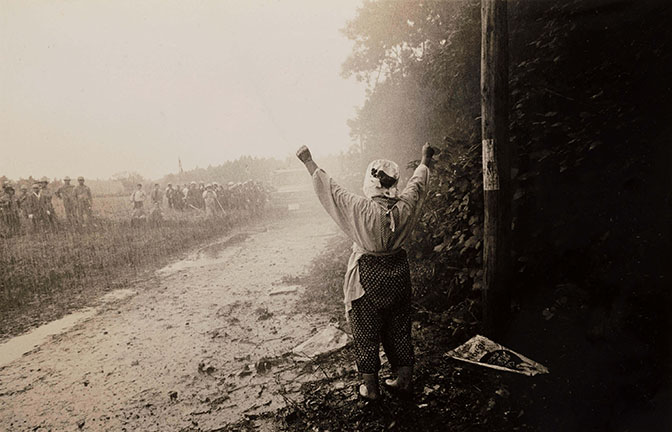
Kazuo Kitai. Female Farmer Taking a Stand against the Riot Police Water Cannon from Riot Police from the series Sanrizuka, 1970. The Art Institute of Chicago, Kenneth and Christine Tanaka and Photography Purchase Funds. © 1970 Kazuo Kitai.
It was not until graduate studies that I really became acquainted with Japanese photography. Specifically, at this time, I was introduced to Nobuyoshi Araki, Eikô Hosoe, Daidô Moriyama, Yutaka Takanashi, and Shômei Tômatsu in a seminar focused upon the intersection of the occident and orient led by Professor Jeffrey Rosen. Initially I struggled with this work. I felt the printing was poor, the repetitive imagery unnecessary, and the conceptual approaches out-of-touch with dialogues occurring in the west. I just didn’t get it. My first attempt was little more than a surface reading that lacked true commitment. I did not fully understand these artist’s innovative approaches through experimentation (e.g., obfuscating the subject) to successfully convey powerful societal changing messages. The anger and raw imagery contradicted previously established exotic, yet meditative impressions of Japan. Up to this time, Japan symbolized conformity and order. This new material was dark and dirty, and in all honesty, I was not fully prepared to digest the alienated and complex voices of these seminal artists.
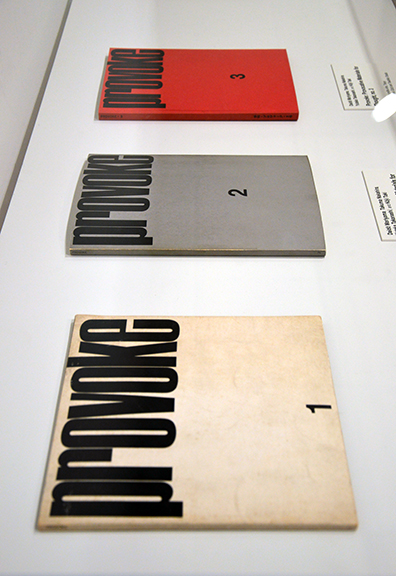
“Provoke”: Photography in Japan between Protest and Performance,, 1960–1975, Art Institute of Chicago, through April 30, 2017, Galleries 1–4 and 10, photo by Chester Alamo-Costello
Over the years I have continued to add photobooks by Japanese masters to my library. With these additions, I have developed a better understanding of the aesthetic, cultural, and political parallels between Japan and the U.S. In “Provoke” one encounters a comprehensive examination of a vigilant socio-political movement with direct ties to American post-World War II international policy. Tensions were high in late 1950s Japan. Dialogues related to nuclear empowerment, unwanted American occupation, and treaties without wide support were being signed by leaders. Many felt disenfranchised.
In November 1957, Prime Minister Nobusuke Kishi and the Liberal Democratic party established the Diet, a severe bill that essentially eliminated the possibility to assemble, protest, and gave police unchecked ability to search homes without warrant. These actions set into motion a national response not seen before. The masses (students, farmers, unionists, etc.) assembled, took over public buildings and universities, and created a voice that could not be ignored.
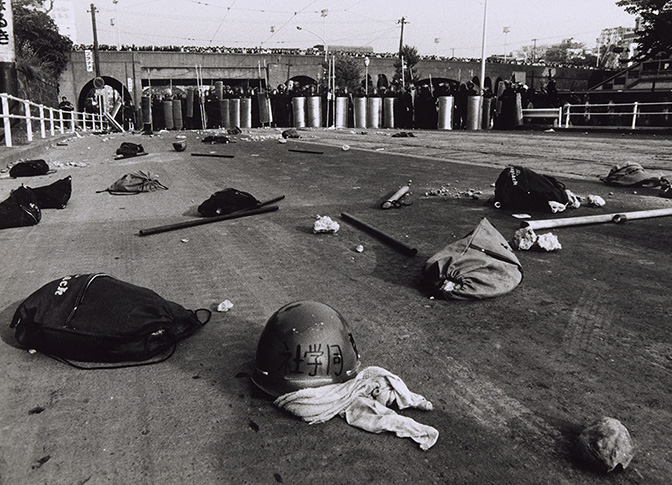
Kōji Enokura. Symptom–Column, Body (P.W. No. 51), 1972. The Art Institute of Chicago,
Photography Gala Fund. © Michiyo Enokura.
A primary vehicle for voicing dissent was the creation of small-run printed publications. Often crudely assembled on copy machines in unknown quantities, the pamphlets presented here are true artworks of protest. The exhibition offers numerous examples, black-and-white photographs, a life-size photographic scroll, and a documentary film on the resistance to the building of the Narita international airport outside Tokyo. The centerpiece is the “Provoke” publication. In the three issues of “Provoke” produced between November 1, 1968 and August 10, 1969 (edition of 1,000 each) the collective that consisted of photographers Daidō Moriyama, Takuma Nakahira, and Yutaka Takanashi, critic Kōji Taki, and writer Takahiko Okada outlined a subversive approach to the creation of art that questioned modern aesthetics while simultaneously addressing the political upheaval during this paradigm shift in Japanese society. One telling element of the sophisticated approach to production of these materials can be seen in the exhibition layout. Wall installations of each of the “Provoke” magazines provides a full view of the design and page pagination. This display format offers an insightful understanding of the rhythm and coherence in the artists’ message.
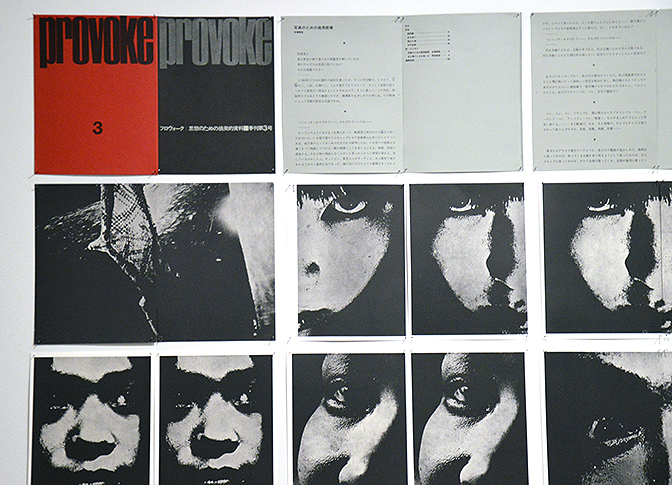
“Provoke”: Photography in Japan between Protest and Performance, 1960–1975, Art Institute of Chicago, through April 30, 2017, Galleries 1–4 and 10, photo by Chester Alamo-Costello
In addition to the publications, performance art was a key element of protest. In stunts and happenings by groups like the Hi Red Center, who took a nod from other activist driven collectives (e.g., Fluxus, Futurists), produced poetic works in city streets that often disrupted the activities of everyday life. Due to the ephemeral nature of the medium, often photography and other documentation has become the primary means for sharing these efforts with future generations. In the cyanotype scroll “General Catalogue of Males”, 1963, by Nakanishi Natsuyuki, one is presented with what appears to be a topographic view of the artist partially clothed at life-scale. The delicate assembly reminds of human conformity of being through a topographic record. However, one needs to consider the environment that these works were conceived for. The importance of these endeavors is set in a time and place, often one set on the city’s metro or busy thoroughfare, where day-to-day activities are brought into question. These events posed question, “Why are we allowing the current state of affairs to continue?” And, in this, societal constructs were planted and revealed in place where the casual passerby could fully contemplate and question.
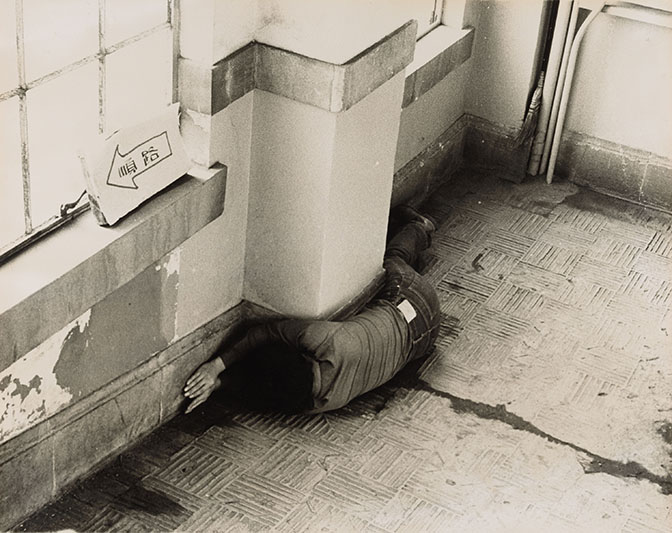
Eikō Hosoe. Kamaitachi #31, 1968. The Art Institute of Chicago, Promised gift of a private collection. © Eikō Hosoe.
The accompanying catalog for the exhibition is a fine brick of a book to add to one’s library. Unabridged at over 650 pages, one can read essays and interviews with key figures (e.g., Hamaya Hiroshi, Takuma Nakahira, Daidô Moriyama, and Shômei Tômatsu), hold a complete facsimile of the “Provoke” magazine, view copiously selected imagery, and delve deeper through contemporary analysis assembled by curators Duncan Forbes, Walter Moser, and Matthew S. Witkovsky, and art historian Yukio Lippit. I’ve yet to encounter a more thorough assessment focused upon “Provoke” and look to spend many hours perusing its’ pages.
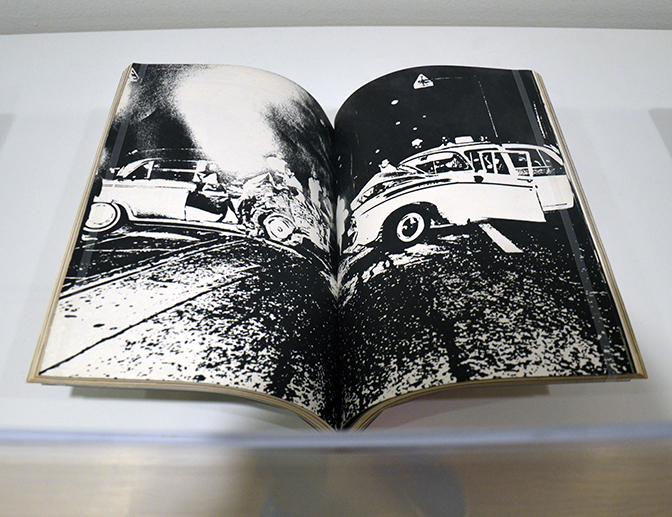
“Provoke”: Photography in Japan between Protest and Performance, 1960–1975, Art Institute of Chicago, through April 30, 2017, Galleries 1–4 and 10, photo by Chester Alamo-Costello
The timing of “Provoke” at AIC is remarkable due to present dialogues occurring in Chicago and beyond. There seems to be an interesting conversation presented in the exhibition where we are seeing cyclic ideas related to free speech, the repercussions of unchecked authority, and the importance for people to be active in their citizenship. Beyond encountering new and innovative materials produced by some of the most important artists Japan has produced in the past 50 years, the viewer will hopefully draw comparison and connection with the necessary elements that make a society healthy, a society that understands the diversity and the needs of its’ vast population, regardless of political affiliation, wealth, and otherwise.
Additional images from “Provoke”: Photography in Japan between Protest and Performance, 1960–1975:
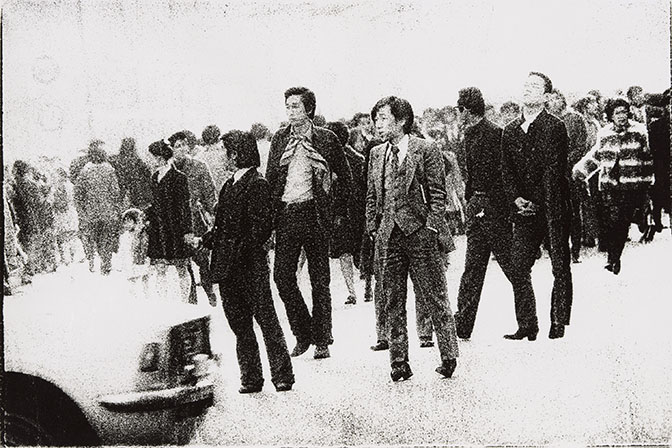
Nobuyoshi Araki. Untitled (C-58-17-1), 1973. The Art Institute of Chicago,
restricted gift of Kenneth and Christine Tanaka. © Nobuyoshi Araki.
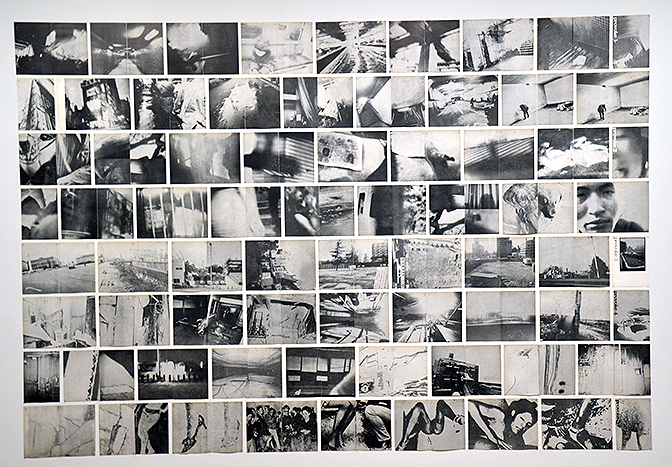
“Provoke”: Photography in Japan between Protest and Performance, 1960–1975, Art Institute of Chicago, through April 30, 2017, Galleries 1–4 and 10, photo by Chester Alamo-Costello
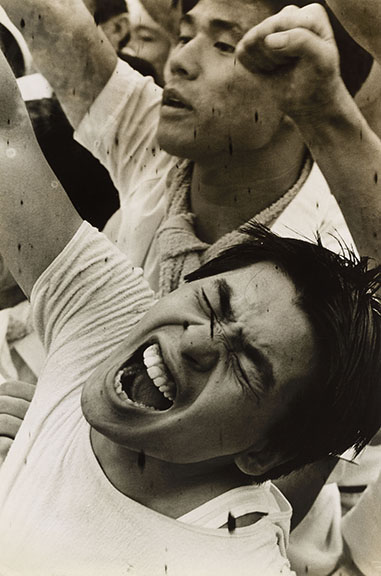
Artist unknown. Protest Surrounding the Construction of Narita Airport, about 1969. The Art Institute of Chicago, Photography Gala Fund.
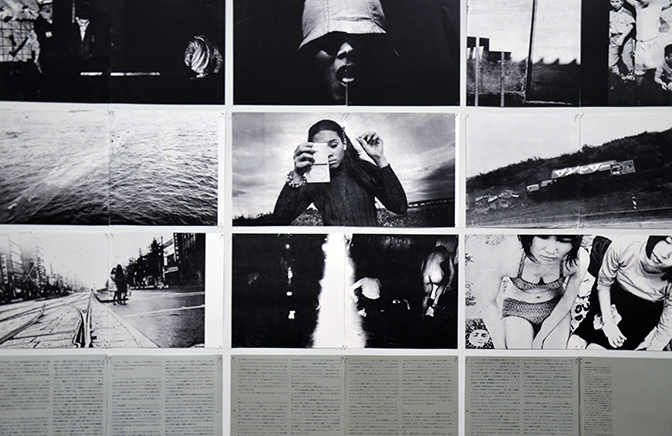
“Provoke”: Photography in Japan between Protest and Performance, 1960–1975, Art Institute of Chicago, through April 30, 2017, Galleries 1–4 and 10, photo by Chester Alamo-Costello
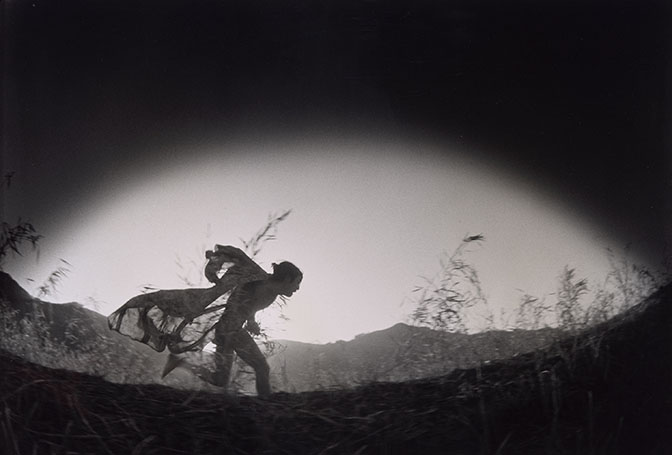
Takashi Hamaguchi. Okinawa Day, in Ochanomizu, April 28, 1969, 1969. The Art Institute of Chicago, through prior gift of David C. and Sarajean Ruttenberg. © Takashi Hamaguchi.
For additional information on “Provoke”: Photography in Japan between Protest and Performance, 1960–1975, please visit:
“Provoke” at AIC – http://www.artic.edu/exhibition/provoke-photography-japan-between-protest-and-performance-1960-75
“Provoke” art book – https://www.amazon.com/Provoke-Between-Performance-Photography-1960-1975/dp/3958291007
Wall Street Journal – https://www.wsj.com/articles/provoke-photography-in-japan-between-protest-and-performance-1960-1975-review-1486065919
“Provoke” exhibition catalog – https://www.youtube.com/watch?v=dV_tw7oiRrg
Review by Chester Alamo-Costello


